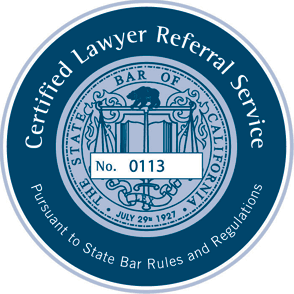Embezzlement Law

If you would like to be referred to High Profile attorney for any or the following crimes: Larceny, False Pretenses, Robbery, Extortion, Receiving Stolen Property, Forgery, and Embezzlement please contact us for your California Attorney Referral.
Larceny: The common law definition of the crime of larceny includes the following elements: (1) The thief must take possession of the property (that is, secure control over the property) from another. (2) The thief must move or carry away the property, although a slight movement is enough, such as the removal of a wallet from another's pocket. (3) There must be a trespass in the taking-that is, the thief must take possession of the property without consent from the rightful possessor. (4) The property must be tangible personal property, such as money, jewelry, or clothing. Under common law larceny does not apply to real property or intangible personal property, such as checks, promissory notes, or other documents that are regarded as evidence of property rather than as property itself. (5) The property must be taken from the possession of another who had a right of possession superior to any right of the accused. It is not necessary, however, that a person steal directly from the owner. (6) There must be an intent to steal-more accurately expressed as an intent to permanently deprive the person from whom the property is taken of possession of or interest in the property. It is not larceny to take another person's property that one honestly believes one owns. It is not larceny to borrow property, intending to return it promptly. A notable exception is the temporary, unauthorized taking of a car, which commonly constitutes the crime of joyriding.
By statute, larceny is often divided into two degrees: grand larceny and petit larceny. The line between the two depends upon the value of the property stolen. Grand larceny is commonly a felony, while petit larceny is a misdemeanor.
Embezzlement: In general, embezzlement occurs when a person who has lawful possession of another's money or property fraudulently converts that money or property. In other words, the wrongdoer, often an employee, trustee, fiduciary, or agent, acquires possession of the property lawfully and then converts the property to his or her own use. The principal distinction between embezzlement and larceny is that in instances of embezzlement, the property is already in the embezzler's possession. In instances of larceny, the property is in another's possession. A less important distinction is that larceny requires only a slight movement of the property, but embezzlement requires a conversion of the property-such as the sale of embezzled property or the spending of embezzled money.
For a conversion to constitute embezzlement, the wrongdoer must intend to defraud the rightful owner of the property. Innocent conversions do not qualify, as when a person honestly believes he or she has a right to convert another's property.
IF you are facing criminal embezzlement charges, secure the help of a criminal defense attorney as soon as possible for the best outcome in your case.
If you have any questions about the information provided above, please call (800) 215-1190 or contact Attorney Search Network.
Call Attorney Search Network for a Lawyer Referral to one of Attorney Search Network's prescreened and experienced panel member lawyers or law firms.



